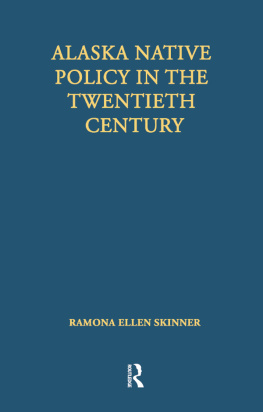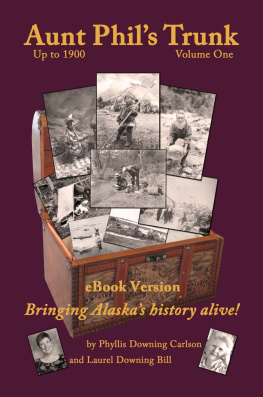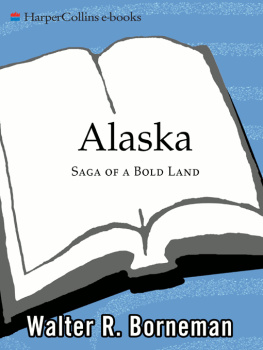Then Fight For It!
The Largest Peaceful Redistribution of Wealth
in the History of Mankind
and
The Creation of the North Slope Borough
by
Fred Paul
Appendices Frances Paul DeGermain
Computer technical advice-Mike Paul
Editorial advice Lee Oliver Murdock
Cover Ben Paul
Copyright 2003 Fred Paul. All rights reserved.
No part of this publication may be reproduced, stored in a retrieval system, or transmitted, in any form or by any means, electronic, mechanical, photocopying, recording, or otherwise, without the written prior permission of the author.
Cover photos:
Top left: Peter Simpson, Tsimshian ANB leader (WLP Jr. collection)
Top right: 1929 ANB camp at Haines Alaska
Middle right: William Tamaree with Keet-kuh-waal, 1940 (WLP Jr. collection)
Middle left: Charlie Jones, Chief Shakes, 1940 (WLP Jr. collection)
Middle: Four generations in Alaska (WLP Jr. collection)
Fred Paul, Blair Paul, Frances L. Paul, Tillie Paul Tamaree, 1944
Middle: Father and son chess game, William Paul Sr. and Fred Paul (WLP Jr. collection)
Lower left: William Paul Jr., ANB secretary (WLP Jr. collection)
Lower middle: Fred Paul, 1986 (Seattle Times)
National Library of Canada Cataloguing in Publication
Paul, Fred, 1914-1994.
Then fight for it! : the largest peaceful redistribution of wealth in the history of mankind / Fred Paul.
Includes bibliographical references.
ISBN 1-55212-946-2
1. United States. Alaska Native Claims Settlement Act. 2. EskimosAlaskaClaims. 3. EskimosLand tenureAlaska. 4. Indian land transfersAlaska. 5. Indians of North AmericaAlaskaClaims. 6. North Slope Boundary (Alaska)History. I. Title.
E78.A3P38 2003333.2 C2001-903224-2

This book was published on-demand in cooperation with Trafford Publishing.
On-demand publishing is a unique process and service of making a book available for retail sale to the public taking advantage of on-demand manufacturing and Internet marketing. On-demand publishing includes promotions, retail sales, manufacturing, order fulfilment, accounting and collecting royalties on behalf of the author.
Suite 6E, 2333 Government St., Victoria, B.C. V8T 4P4, CANADA
Phone250-383-6864Toll-free1-888-232-4444 (Canada & US)
Fax250-383-6804E-mail
Web sitewww.trafford.com TRAFFORD PUBLISHING IS A DIVISION OF TRAFFORD HOLDINGS LTD. Trafford Catalogue #01-0348www.trafford.com/robots/01-0348.html
10987654
Contents
This is where one is supposed to thank people for assisting in the writing of this book. My Brother Fred moved into my house with me after his second wife died. He was ten years older than I and we had not been acquainted with each other except superficially. It turned out to be a wonderful period in my life. We got along beautifully. I put his manuscript into the computer and we talked about the book. We didnt discuss who, or how, anybody helped him! I have no idea whom I should acknowledge! So-to all those unacknowledged people out there, please forgive me, but Thank You!
I know that I wish to acknowledge my cousin Lee Oliver-Murdock for actively assisting in the preparation of this book. Other people said-You really ought to try to get this published! It wasnt much help.
So, thank you, Lee. Thank you to my nephews Blair Paul, Mike Paul, Steve Paul, Ben Paul, and niece Nina Paul-Wright for cooperating on this project. Ben, my brother Bills son, designed the cover. Most of the photos were taken by my brother Bill Paul.
Thank you all!
Frances Paul DeGermain
Shah-naX-ee
By Blair Frederick Paul
Louis Frederick Fred Paul was my father. He died in 1994 at the age of 80. To understand that which follows in this, his personal memoir about his lifes principal work, requires the reader, much more than Dad shares, to understand where he came from. Very few of his many friends or acquaintances perceived the drive within him to right several centuries of wrongs to the Natives of Alaska, but enigmatically, the same was true of most who knew him intimately. Dad was a Boy Scout Master for 13 years while he and my mother reared my siblings and I and I can assure you that neither his children nor his social peers understood the anger in his soul. As an attorney for 25 years, few of his professional peers saw it either as he plied his noble trade in bankruptcy and corporate reorganization law to provide for his family before he satisfied his inner passion. Almost everyone who knew him even casually was aware of his Indian blood but few, perhaps only my mother had ever seen his anger. It is my hope that this prefactory, together with his lifes work that follows, will clarify who and why he was what he was.
Dad was born in 1914 in Alameda, California, to William and Frances Paul, the second child of four. William (Will) was my grandfather. He was born in 1885 in SE Alaska, the second of four children borne to Matilda (Tillie) Kinnon Paul Tamaree. Matilda was born in about 1860 of a Tlingit mother and Scottish father. Her Tlingit name was Kah-thli-yudt and she was reared in the Tlingit culture until age 12 when she was essentially given to a Presbyterian missionary to be reared in the greater cultural tradition of white Christianity. She would marry another half-breed, Tlingit and French-Canadian, Louis Paul Peyreau, making Grampa also a half-blood. For good or bad, Grampa would become the most complex and conflicted of men and it was this abyss that his blood line bridged, white and Indian, which made him so. Grampas Indian name was Shquindy.
Tillie made Grampa, in the core of his soul, schizophrenic. He knew not whether he was Indian or white. Tillie had punished all of her boys for speaking their Native tongue. Her life was intimately and inextricably connected to her church to such an extent that she became the second female to be recognized as an Elder of the Presbyterian Church, worldwide. The price she paid for this stature, however, was her complete acceptance of the cultural paganism of her people. Her mission in life, however, was not to abandon her people, but to convert them from their pagan to Christian ways. At her first opportunity she sent her sons stateside to attend prep school at the Carlisle Indian School in Pennsylvania, yes, an Indian school, but one that embraced Christianity and the superiority of European culture over that of the Indian. Here both Will and his brother Louis learned how to print newspapers, a trade that turned out to be very useful later. Grampa was only 14 when he left Alaska and except for brief summer visits was not to return to the place of his birth until he was a young husband, father and aspiring lawyer.
Following Carlisle, Grampa spent six months at The Banks Business School in Philadelphia. He had to turn down a football scholarship to Dickinson Law School when his mother called him home because of her ill health. Soon he went to Whitworth College (Presbyterian) in Tacoma, Washington. Then one year at San Francisco Theological Seminary in San Anselmo, California. His choice of a bride was the white daughter of a Presbyterian minister from Aberdeen, Washington. His greatest ambition in life as a young man was to sing at the Metropolitan Opera in New York City where older brother Sam actually settled, never to return to his Alaskan roots.
At this point, it is important to digress and for the reader to reflect upon the time which we examine. The reader should appreciate much more than casually when looking at any work examining the Indian world of the 18 th and early 19 th centuries. Bashing of all Native cultures was very much a part of the churchs, all churches, professed goals; indeed it was the stated goal of the American government in its assimilation-istic and termination-istic policies of the time.
Next page













